This is a platform for sharing information regarding MA Urban Design programme. Any stuff related to any modules in the programme is welcome in this section.
The working in (Mega Team A)
by Siham Saleh
During the second semester this year, there was an interesting grouping up way between MA urban design students at urban design project 2, which has been managed by our lecturers Georgia and Mark. In particular, I just wanted to highlight the experience in this group working and indicate some interesting ways we already shared and done it during that. However, our whole group is around 14 students, and we divided into two groups Mega Team A and Mega Team B, each of group contain 7 students which is divided into two small groups.
This practice was new challenge for all of us to be an affective participant in the working process, especially, integrate and conflict different point of views and managing the work between us. Basically, in large group working it is very difficult to do the work specifically designing and creative work. At the beginning, I thought it cannot be an easy and beneficial practice but I found that it is very valued lesson that could affect your personal way of thinking, managing the work and adopt the others personal perspectives. Our Mega Team was well managed group of working team with some exceptions, as you know noting can be perfect, the reason behind that I guess it is the ability of some students to managing the time and leading the work. However, the most interesting part that I would like to show you in this post is some of our ways of as following list and pictures:
1- How we thought in loud voice ?
It was very interesting way, how we thought loudly by using some basic tools such as pens and clay!! Which is a way that can lead to make each of us put his or her imprint in this process as shown in these following pictures.
2- How we discussed and shared our points of views and where?
We just pin up our working on the wall in the architecture studio ( our study’s home) and discussed all together our points of views .
3- How we selected who will work in east or west part of the site?
The way simply was to write in piece of paper (east site and west site) and just one of members of small group select and take the paper as shown in following picture. Actually, It was a fair and good way to choose which part the both small groups will do.
Finally, I just wanted to give my thankful to Georgia and Mark to gave us this opportunity of being integrated in this practice and also give my thankful to my Mega Team A who I lived with them very interesting and valued time during the semester.
Places and Non-places
By Harvé Dhillon
Before our European study visit to Brussels this February we had presented and read many texts about the use of spaces both public and private, how these are utilised leading to the debate that some of these spaces maybe places for some people whereas for others they are non-places. Similarly such discussion has also occurred in Cities & Buildings module and Akshay and I presented Marc Auge’s text ‘From Places to Non-places’. Therefore when I was in Brussels I subconsciously had been exploring the various dead spaces or non-places that existed in the city. It made me think what we could possibly do as Urban Designers to improve or create spaces from these non-places if we did need to intervene that is. Furthermore, what was interesting was this concept of Supermodernity creating non-places and therefore the world we are living in and will live in the future will be places that lack identity, be sterile and dominated by the economic confinement of globalisation. I have added some photos of interesting non places or arguably places in Brussels that may have had some significance to people on the trip, so I hope people will be able to recognise these spaces and comment if they thought they were non-places too or not. Also, if people have any photos of places and non-places please upload them.
Architecture Saint – Luc Brussels:
By Aaron Murphy
Last month we all travelled to Brussels for the European design project. Despite the freezing weather and everyone being sick the week was a great success. For me the most interesting aspect was visiting the Saint – Luc School of architecture. The trip provided an opportunity to view the work of the Belgium students and for them to view our work. Several students from Saint- Luc explained their proposals for Molenbeek; an area of Brussels which we are also studying. Hearing students’ views on Molenbeek and seeing their proposals was very interesting as it allowed us to better reflect on our initial views of the area. Information provided by the students proved invaluable. I was especially interested by the information provided in relation to the Refugee facility ‘Petit Chateau’. The girl that had worked on that area described her visit to the facility and I was quite surprised by just how appalling the place sounded. Insights such as this proved invaluable as we could not enter the facility. Therefore, I feel that the interchange between students was very positive and think it would be great if the students could stay in touch via the blog, in order to help each other with their projects.
Byker Wall: Building For Life Assessment
by Carlie, Harvé, Jun & Siham
Scores of (1-5)
Environment and Community – 3.4
Does the development provide (or is it close to) community facilities, such as a school, parks, play areas, shops, pubs or cafes? – 3
- School, pubs, Morrison’s, clubs provided- Play areas: not enough, inadequate
- Vacant Churches
- Green space: lack of quality
Is there an accommodation mix that reflects the needs and aspirations of the local community?- 4
- From 1 bedroom unit to 6
- Flat types to house
Is there a tenure mix that reflects the needs of the local community? – 3
- Used to be social housing only, but now it has privately owned ones
Does the development have easy access to public transport? – 5
- Metro station
- Bus routes and stop all around the estate
Does the development have any features that reduce its environmental impact? – 2
- Central heating using the community’s rubbish
- Retrofitting: Insulation
- Low technology
- Car dependency: Car free to car invaded
Character – 3.8
Is the design specific to the scheme? – 5
- Unique design responded to the anticipated developments: Wall
- Participatory design process
Does the scheme exploit existing buildings, landscape or topography? – 4
- Exploit topography: follow the contours
- Incorporated or hugged the existing buildings: churches, public baths
- Exploit the remnants of the previous developments
Does the scheme feel like a place with distinctive character? – 5
- Unique characteristics: design, colour, materials, bridges
Do the buildings and layout make it easy to find your way around? – 2
- Lack of signage, orienting points
- Maze-like streets
Are streets defined by a well-structured building layout? – 3
- Main streets are well defined
- Smaller streets are not clearly articulated
Streets, parking and pedestrianisation – 2.4
Does the building layout take priority over the streets and car parking, so that the highways do not dominate? – 3
- Some streets dominate building layout
Is the car parking well integrated and situated so it supports the street scene? – 1
- Improvised, haphazard (because, it was not considered in the design stage)
Are the streets pedestrian, cycle and vehicle friendly? – 3
- Pedestrian oriented design
- Improvised parking and vehicle movements make it unfriendly
- No cycle routes or parking
Does the scheme integrate with existing streets, paths and surrounding development? – 3
- Some good links
- The Wall is acting as a big barrier
Are public spaces and pedestrian routes overlooked and do they feel safe? – 2
- They are generally overlooked, but not always feel safe
- Lack of clear definition between public and private
Design and construction – 2.5
Is public space well designed and does it have suitable management arrangements in place? – 2
- Seating areas are provided, but locations are problematic
- It does have resident’s association
- But, not effective on big issues
- Not enough play areas for kids
Do the buildings exhibit architectural quality? – 3.5
- Unique characteristics in aesthetics
- Some materials are not sturdy enough
Do internal spaces and layout allow for adaptation, conversion or extension?- 2
- Not much flexibility
Has the scheme made use of advances in construction or technology that enhance its performance, quality and attractiveness? – 2
- Continuous upgrading, but not innovative technologies were employed
Do buildings or spaces outperform statutory minima, such as building regulations? – 3
- probably yes
Overall Score – 12
In conclusion the Byker Wall received a score of 12/20 which indicates it has potential for a Silver award in the Building for Life Assessment. The greatest asset and advantage it has its due to it character and distinct architecture. However despite the recent retrofitting, these appliances were not energy efficient. In terms of community the introduction of the Right to Buy implementation had introduced a mix ownership, with a range of young families to old age pensioners residing in the area. Despite having a mix ownership, the affordability of personal vehicles has also contributed to a higher car ownership of the residents, and so the scheme has become less pedestrian friendly. What is evident is there is still a negative perception of the estate, although crime rates are not exceedingly high in comparison to other housing estates, there is a general sense of insecurity due to the CCTV camera signs which were placed and a resident had told us he had been burgled twice, until that point we had already decided that we would not mind living in Byker Wall.
Building for Life 20 Question’s: Rivers’ Gate, Walker Riverside, Newcastle
By Akshay Varma, Wang Jing & Lizzie Bird
On our field trip following our Visit to Staiths’ South Bank (see below) we visited Rivers’ Gate, a Place for People development in Walker Riverside Newcastle (see Rivers’ Gate Site Plan) . We were set the task of using the Building for Life 20 Questions to carry out an assessment of this scheme. After visiting Rivers’ Gate, taking photos, and doing some additional research our group got together in the studio to agree on joint scores for Rivers’ Gate. Some time (and discussing!) later we had agreed on a final score of 15. Following the Building for Life Scoring this marks the scheme as ‘good’. As a useful comparison we used the BfL criteria to score St James’ Village a housing scheme neighbouring our Freight Depot Site. As you can see we were a little less positive…
From assessing the two schemes and from the field trip our group took the following as key lessons:
- It is important to integrate housing types and tenure carefully.
- Should be aiming to exceed building regulations, push boundaries.
- Important to use the topography and views of the site.
- Good quality design that uses a range of materials is important.
- High quality public spaces are important but so too are semi private spaces.
- Landscaping from the beginning of development makes a big difference.
- Links outside of the development are important – schools, public transport.
Case Study: Staiths South Bank, Dunston, Gateshead
By Akshay Varma, Wang Jing & Lizzie Bird
As part of our site analysis for the Freight Depot Site, Urban Design Project 2, we were asked to identify a Case Study of a high quality residential scheme. Our MEGA Team (MEGA Team 1) chose to look at Staiths South Bank as our Case Study. Carrying out our research we used two really useful links:
http://www.cabe.org.uk/case-studies/staiths-south-bankhttp://www.hemingwaydesign.co.uk/html/staiths.htm
As part of our field trip on Tuesday 1st March, the first residential scheme we visited first was Staiths Southbank, Gateshead. After having a look round the scheme Roger Meir, from Ian Darby Partnership (idp) talked to us about the design process behind Staiths Southbank. Most people on Tuesday seemed quite positive about the scheme, appreciating the effort that had been made in the design to create a development that had a distinct character with high quality, well landscaped private, public and especially semi-private spaces (the ping pong table and BBQ’s). See Jing’s video below!
Reflections on Walker Riverside & Dunston Staithes
By Aaron Murphy, Scott Gibson, Sarah Muscat, Chen Xu
Before visiting our scheme; The Byker Wall, we spent two hours touring the other two schemes; Dunston Staithes and Walker Riverside. Whilst walking around we talked about aspects of the schemes which we were impressed by and aspects which we felt could be improved. We were generally impressed with Dunston Staithes. However, the aspect which impressed us the most was the communal areas. We felt that the subtle delineation of public and private areas successfully created partially enclosed, private communal areas. Furthermore, we felt that the use of barbeques, seating, landscaping and table tennis tables added character and vitality to these areas, which in turn made them user-friendly. One negative aspect of the scheme was the fact that it turned its back on the street; the housing was inward facing and cut off from the road by a huge fence and as a result it was segregated from the surrounding area.
It is fair to say that the group was less wooed by Walker Riverside! Although we felt that the scheme signalised an aspirational improvement in terms of its relationship to surrounding properties, we felt that it could have been improved in several ways. Two aspects which we felt required significant improvements were surfacing of spaces and car parking. We felt that the development was made up of too much hard-surfacing, and that it could have been improved by the introduction of soft landscaping and communal areas similar to those at Staithes. Additionally, we felt that the scheme suffered from poorly designed parking spaces – Scott recalled that the area often resembled a ‘Huge Car Crash’ of an evening, due to sporadically parked vehicles!
Byker Wall: Building For Life Assessment
By Scott Gibson, Chen Xu, Sarah Muscat, Aaron Murphy
On a cold, crisp and sunny Tuesday we explored the Byker Wall, armed with questionnaires and cameras to assess how this 1970s development, designed by Swedish architect Ralph Erskine, would score against today’s Building for Life criteria. The development includes a snaking linear complex of maisonettes (the ‘Wall’) enclosing low rise blocks of housing, arranged around networks of paths and open spaces. It was designed to offer a wide accommodation mix for a community that lived in slum terraces, although it was limited to social tenure until ‘Right to Buy’ legislation encouraged some owner occupation to penetrate the mix. The architectural quality was groundbreaking for its time and on our visit we found that much of this quality remains today, with nice touches including bird boxes and balconies that offer panoramic views of Newcastle and Gateshead from the higher floors. This quality however, is undermined by its layout, which can be confusing to negotiate. Vehicular access has been retrofitted to accommodate rising car ownership. Some of the spaces and dark corners under buildings show some neglect and there are boarded properties which suggest that some of the housing is no longer popular. Negative perceptions and a lack of community cohesion also stigmatise the area. But we could assert that these are more to do with management and maintenance over the years and less to do with the original design principals for the development. The development did score poorly for not having renewable / low carbon energy or energy efficiency measures, but we must remember that the development was designed at a time when these issues were low on the agenda. Overall, the development came slightly short of achieving a silver standard, with an agreed Building for Life score of 13/20. Not bad for a scheme that’s been compromised over the years.
Freight Depot Site Visit
By Aaron Murphy
Semester Two kicked off last week with a visit to our new urban design project site. The site in question is the former Freight Depot Site in Gateshead. We were accompanied on our visit by Gateshead Council Urban Designers, Georgia and our new lecturer and sustainability expert Mark Siddall. The brief for the project is to provide a sustainable, bespoke housing development, which integrates with future proposals in Gateshead such as the Baltic Business Quarter and the Town Centre Regeneration.
The site visit was particularly interesting, not just because it provided the opportunity to analyse and explore a fresh site, but also as it provided the opportunity to observe the various elements of the site which appealed to different students. It was evident in this week’s analysis presentation that different aspects of the site intrigued different students. The analysis presentations featured photos of different elements of the site from small objects and elements found on the site to panoramas of the site and the surrounding area. Some students in my group had photographs of other students using and exploring areas of the site, such as playgrounds and raised decks. I thought that this varied experience of students could be an interesting feature for the Blog, and I would be interested to see photographs of elements which people found exciting or photographs which demonstrated how we all used and explored the site. Furthermore, I feel that reflection on how a variety of people use the site could allow us greater potential to successfully redesign the site for a variety of users. Therefore, it would be great if people could upload their photographs and experiences on the Blog.
TCP8032 Communications Techniques & Approaches – AutoCAD
By Harvé Dhillon
For those of you who want to practice using AutoCAD (I know planners in particular) can do so legitimately as a student by registering with your Newcastle University email address for a three-year period on the Autodesk website. This is possible for both Windows and Mac.
STEP 1 – REGISTER
- http://students.autodesk.com/?nd=register
- Using a student email address enter your Newcastle university email, as well as the rest of your details e.g. name, country etc.
STEP 2 – RECIEVE EMAIL
- You should receive a confirmation link to your Newcastle University email.
- Click on the link. You should then be directed to AUTOCAD DOWNLOAD page.
STEP 3 – CHOOSING YOUR SOFTWARE & OS
- Choose the software AUTOCAD.
- Choose the appropriate OS, which matches your own (if for Mac).
STEP 4 – DOWNLOADING
- You should then be able to download the software.
- Copy the serial and key given by the website as this would be needed to activate your software.
Hope everyone who does not have AutoCAD and would like to avoid spending £4000 find this useful!
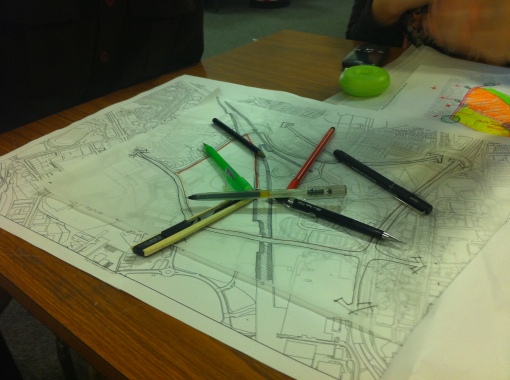
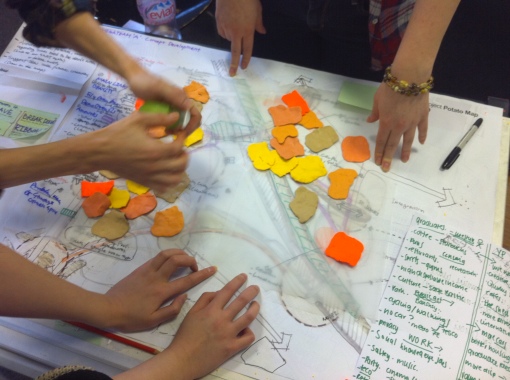




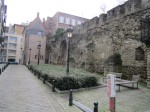

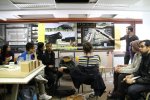
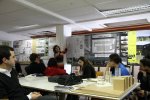


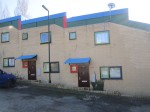
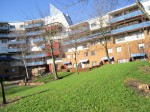

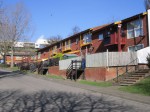
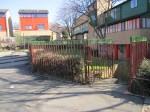




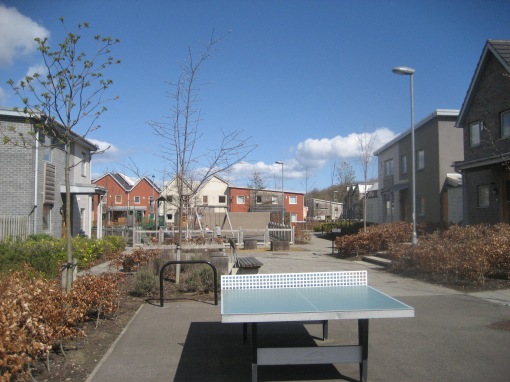



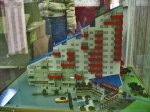
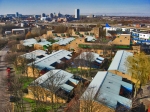



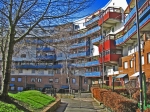
 Northern Architecture
Northern Architecture Project for Public Spaces
Project for Public Spaces Urban Design Group
Urban Design Group
http://www.sociodesignfoundation.org/
This is quite interesting given our discussions on Georg Simmel’s The Metropolis and Mental Life earlier in the week…..
L
Thanks for that gem of info Harveen!